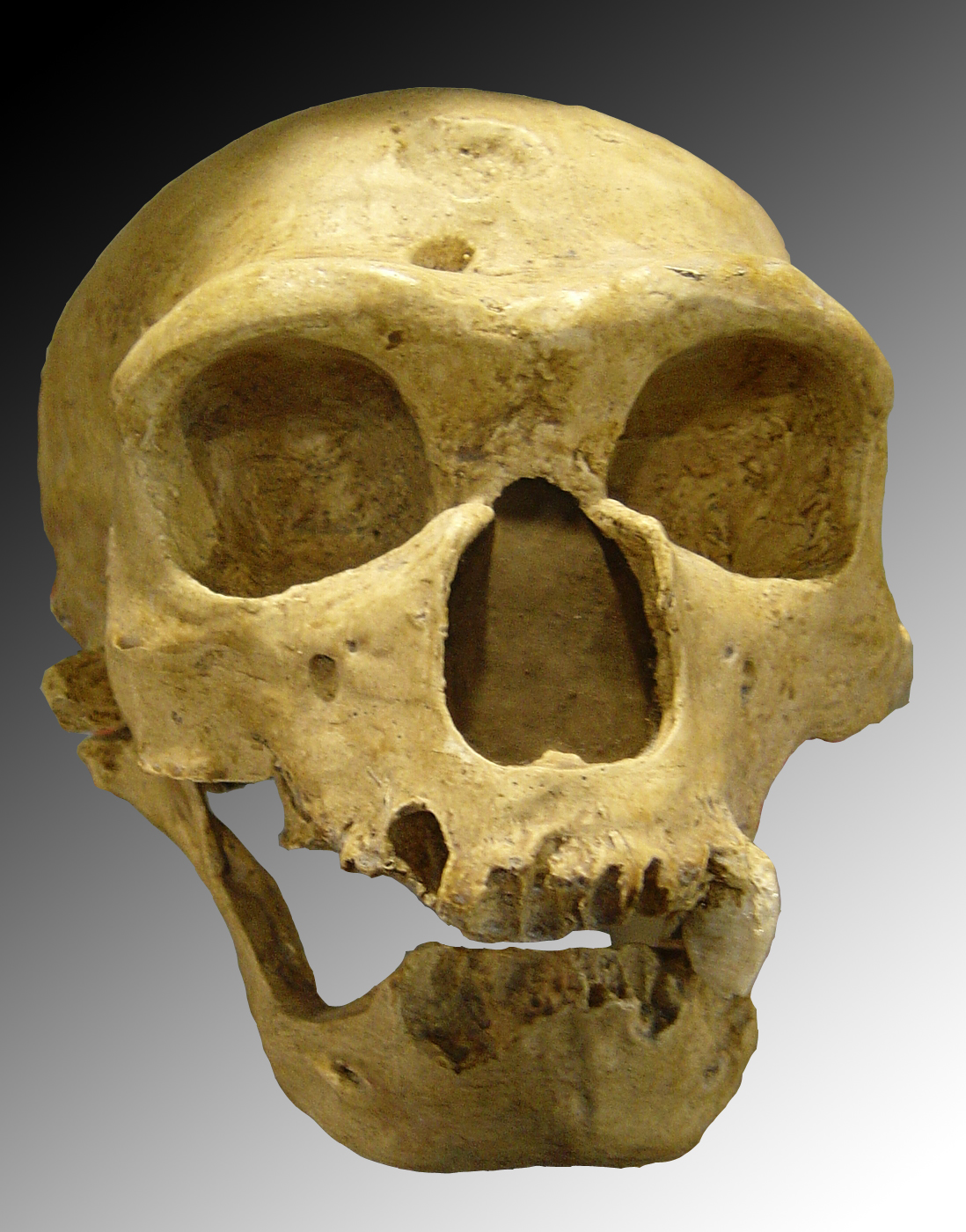- Homo (genus)
image_width = 200px
image_caption = Skull of "Homo neanderthalensis "
regnum =Animal ia
phylum = Chordata
classis =Mammal ia
ordo =Primate s
familia =Hominidae
subfamilia =Homininae
tribus =Hominini
subtribus =Hominina
genus = "Homo"
genus_authority = Linnaeus, 1758
subdivision_ranks =Species
subdivision = "Homo sapiens "
See text for extinct species."Homo" is the
genus that includes modern humans and their close relatives. The genus is estimated to be about 2.5 million years old, evolving fromAustralopithecine ancestors with the appearance of "Homo habilis ". Appearance of "Homo" coincides with the first evidence ofstone tool s (theOldowan industry), and thus by definition with the beginning of theLower Paleolithic .All species except "
Homo sapiens " (modern humans) are extinct. "Homo neanderthalensis ", traditionally considered the last surviving relative, died out 24,000 years ago while a recent discovery suggests that another species, "Homo floresiensis ," may have lived as recently as 12,000 years ago.A minority of zoologists consider that the two species of
chimpanzee s (usually treated in the genus "Pan"), and maybe thegorilla s (usually treated in the genus "Gorilla") should also be included in the genus based on genetic similarities. Most scientists argue that chimpanzees and gorillas have too many anatomical differences between themselves and humans to be part of "Homo". Given the large number of morphological similarities exhibited, "Homo" is closely related to several extinct hominin genera, most notably "Kenyanthropus ", "Paranthropus " and "Australopithecus ". As of|2007, notaxon is universally accepted as the origin of the radiation of "Homo".The word "homo" is
Latin for "man", in the original sense of "human being", or "person". The word "human " itself is from Latin "humanus", an adjective cognate to "homo", both thought to derive from a Proto-Indo-European word reconstructed as"PIE|*dhǵhem-" "earth" [ [http://www.bartleby.com/61/roots/IE104.html dhghem] The American Heritage® Dictionary of the English Language: Fourth Edition. 2000.] . Cf. Hebrew "adam", meaning "human", cognate to "adamah", meaning "ground". (And cf. Latin "humus", meaning "soil".)pecies
Species status of "Homo rudolfensis", "H. ergaster", "H. georgicus", "H. antecessor", "H. cepranensis", "H. rhodesiensis" and "H. floresiensis" remains under debate. "H. heidelbergensis" and "H. neanderthalensis" are closely related to each other and have been considered to be
subspecies of "H. sapiens", but analysis ofmitochondrial DNA from "Homo neanderthalensis" fossils shows that "H. neanderthalensis" is more closely related to chimpanzees than "H. sapiens" is, thereby suggesting that "H. sapiens" is the more derived of the two.cite web|url=http://www.newscientist.com/article/dn10275-neanderthal-dna-illuminates-split-with-humans.html |title=Neanderthal DNA illuminates split with humans|accessdate=2006-12-21 |date=2006-10-11|publisher=NewScientist.com]References
*cite journal|author=Serre "et al."|year=2004|title=No evidence of Neandertal mtDNA contribution to early modern humans|journal=PLoS Biology|volume=2|issue=3|pages=313–7|pmid=15024415|doi=10.1371/journal.pbio.0020057
External links
* [http://www.talkorigins.org/faqs/homs/species.html Hominid species]
* [http://www.fmnh.helsinki.fi/users/haaramo/Metazoa/Deuterostoma/Chordata/Synapsida/Eutheria/Primates/Hominoidea/Hominidae.htm Mikko's Phylogeny archive]
Wikimedia Foundation. 2010.

